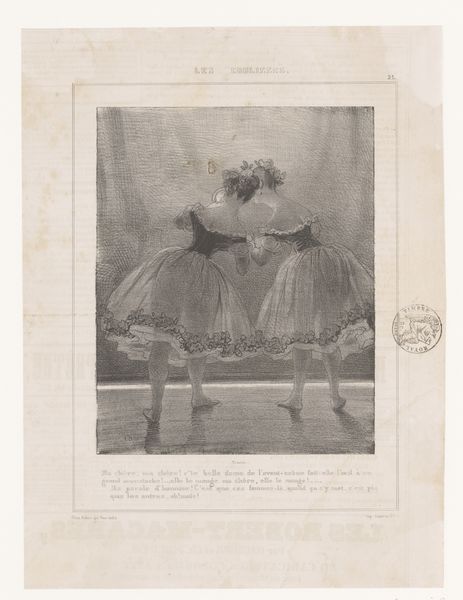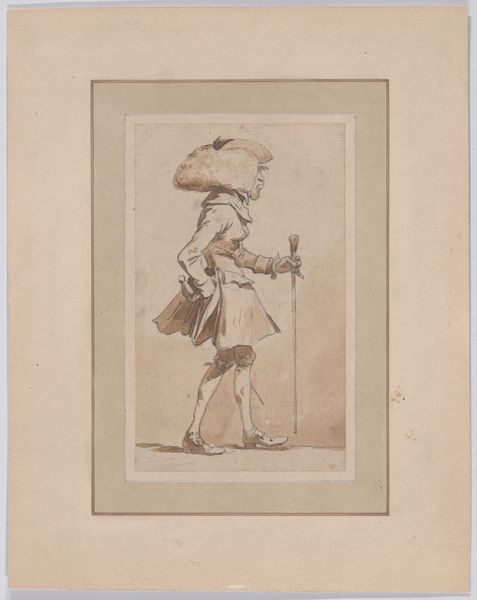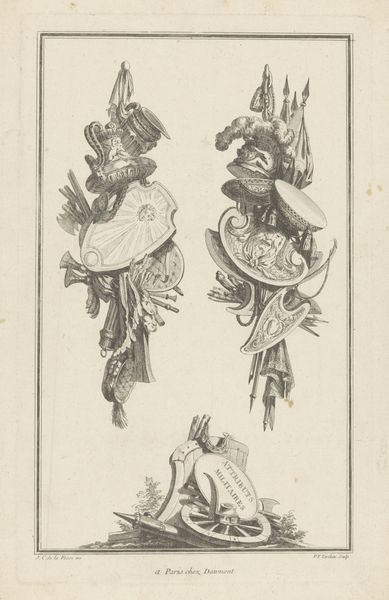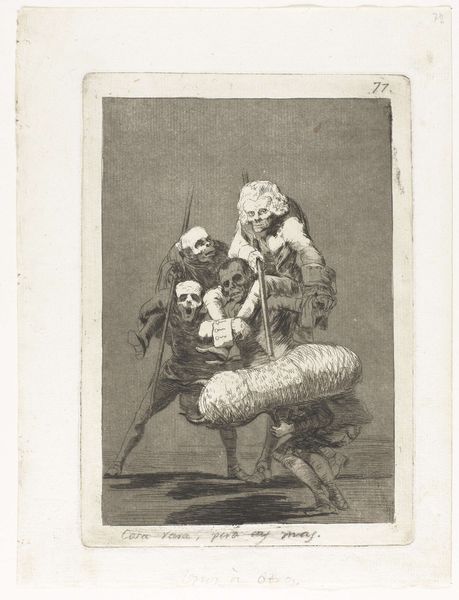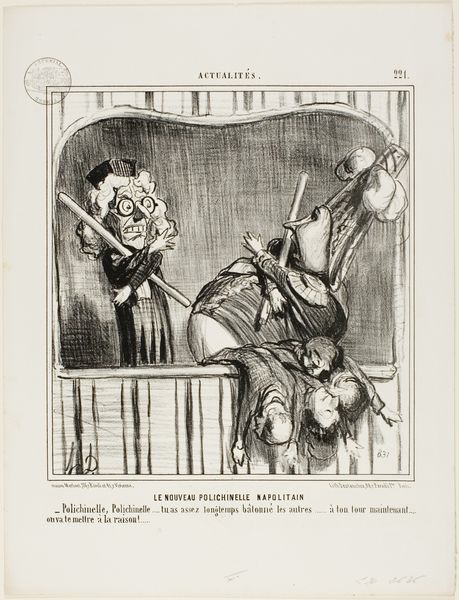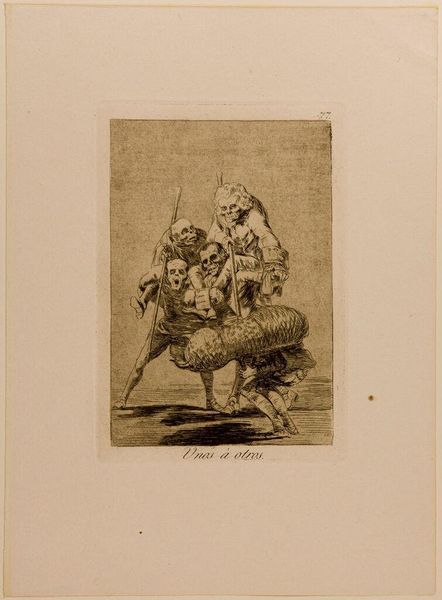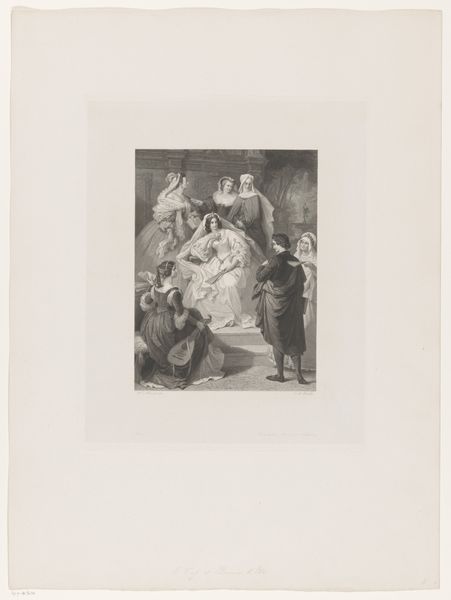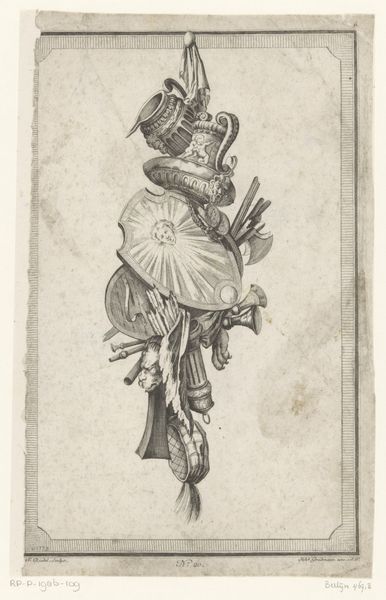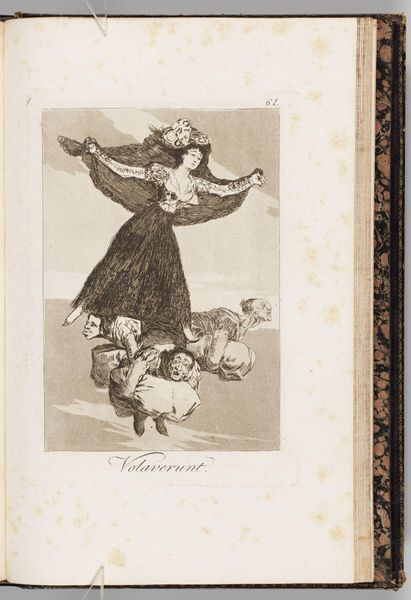
drawing, pencil, pen
#
portrait
#
drawing
#
caricature
#
pencil sketch
#
pencil drawing
#
romanticism
#
pencil
#
pen
#
genre-painting
Dimensions: height 276 mm, width 197 mm
Copyright: Rijks Museum: Open Domain
Curator: This pen and pencil drawing, dating from 1833, is titled "Paljas en Pierrot," made by Paul Gavarni. It is currently held at the Rijksmuseum. What is your first impression? Editor: It's... unsettling. The rendering is exquisite, a tight and complex balance of shadow and light. But the mood—the slumped figure weighed down by the other—it suggests a dark sort of camaraderie. Curator: I agree. Gavarni was particularly interested in exploring societal roles and identities through his caricatures. In this instance, the figures of Paljas, a Dutch clown, and Pierrot are representative of particular archetypes, often examined through the lens of Romanticism’s focus on human emotion and internal conflict. Editor: Tell me more about those figures, as material forms. Consider the line work, the way the artist meticulously renders the checkered fabric of Paljas' trousers and contrasts it with the smoother, simpler garb of Pierrot. It seems almost designed to highlight their differing social statuses and burdens. Curator: Absolutely. And their postures reinforce that. Pierrot, usually a symbol of wit and lightness, appears here almost childlike, being carried. This challenges the usual reading. I would argue this subversion encourages discussion about power dynamics, and perhaps the literal and figurative weight of expectation or even dependency. Editor: The weight of dependency… precisely. I see how Gavarni has used line and composition to draw our eye downwards, emphasizing the stooped posture and strained figure of Paljas. There’s a performative aspect here, as though both characters are trapped in roles dictated by social constraints. The composition, the technique… everything points toward imprisonment. Curator: It's a sharp social commentary. It’s especially intriguing when viewed through today's lens of social justice—forcing the observer to address their personal and political agency when dealing with hierarchical relationships. Editor: It prompts consideration for not just what is seen, but the underpinnings and the structural foundation on which is all precariously supported. The artist challenges us to critically look, even when looking at clowns, a powerful commentary for our times. Curator: Indeed. It demonstrates the ability of drawings such as this one to trigger conversations about identity, positionality, and power – across eras.
Comments
No comments
Be the first to comment and join the conversation on the ultimate creative platform.
